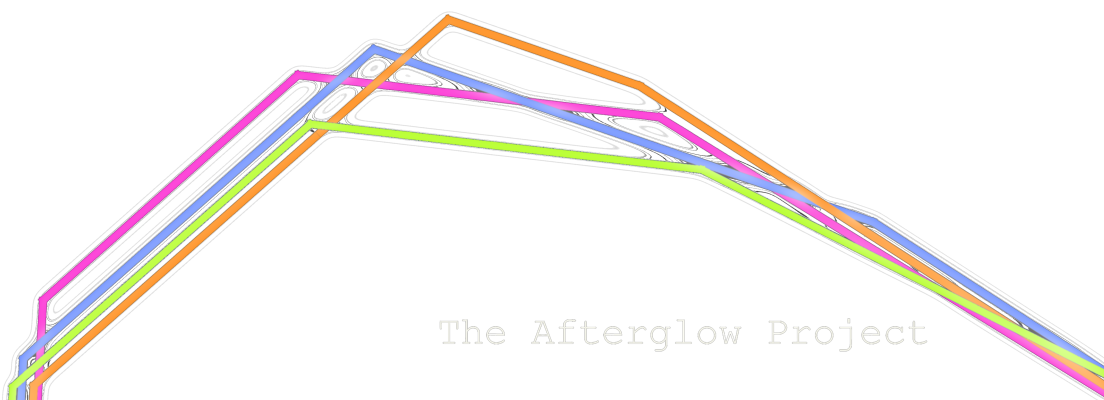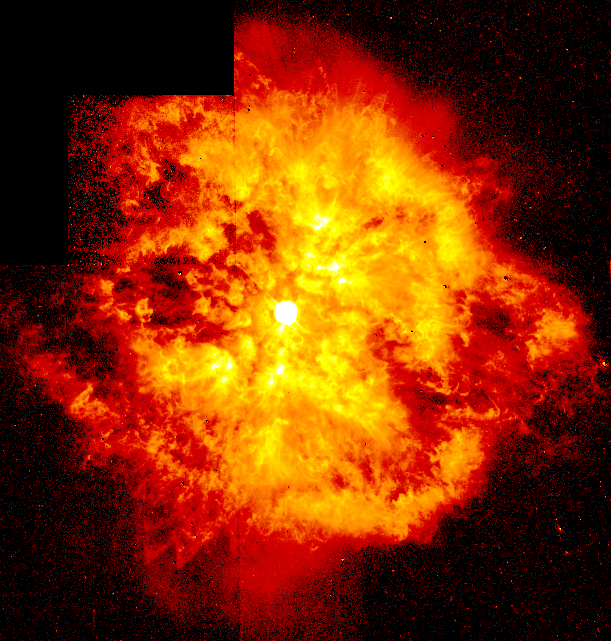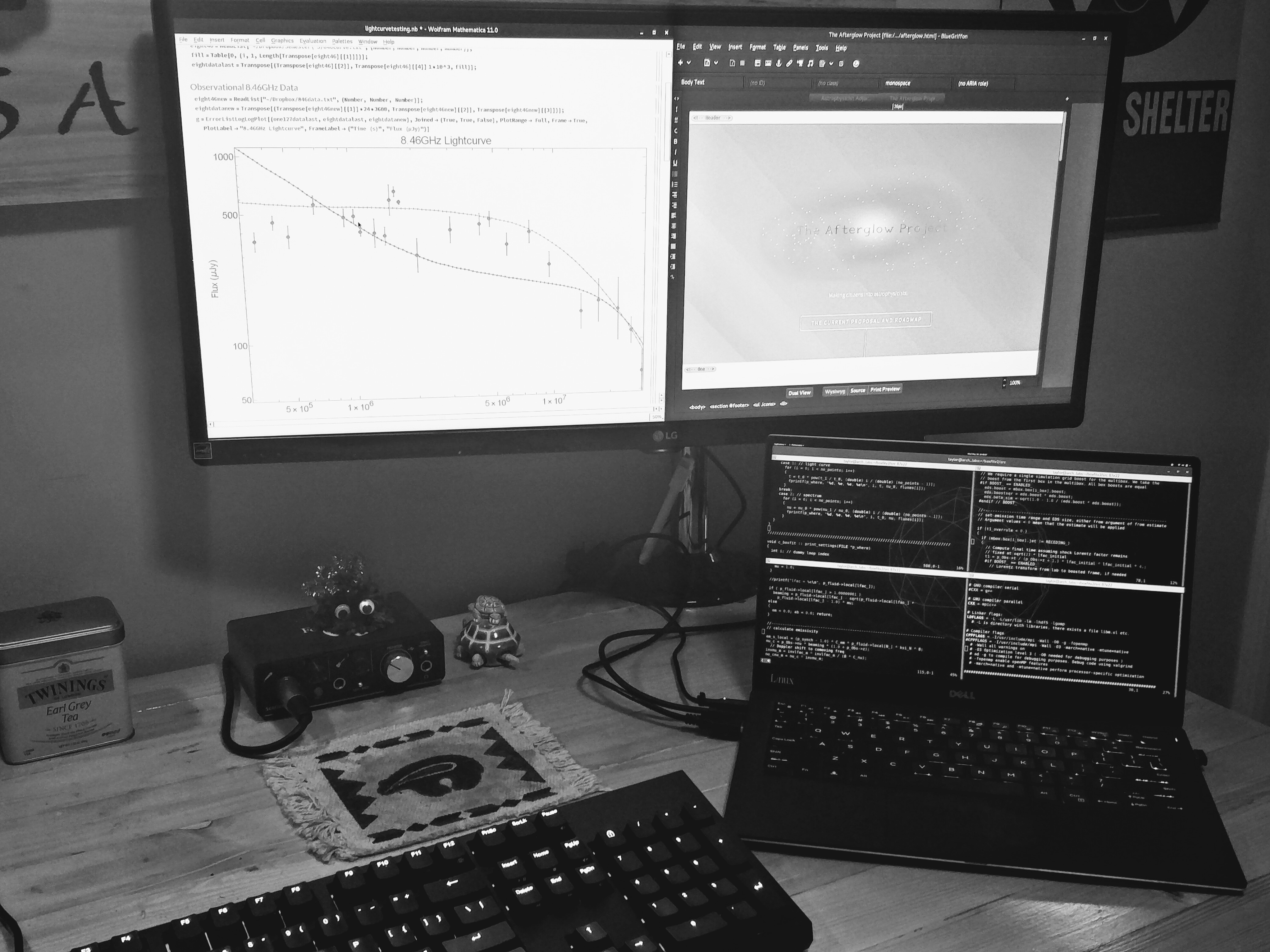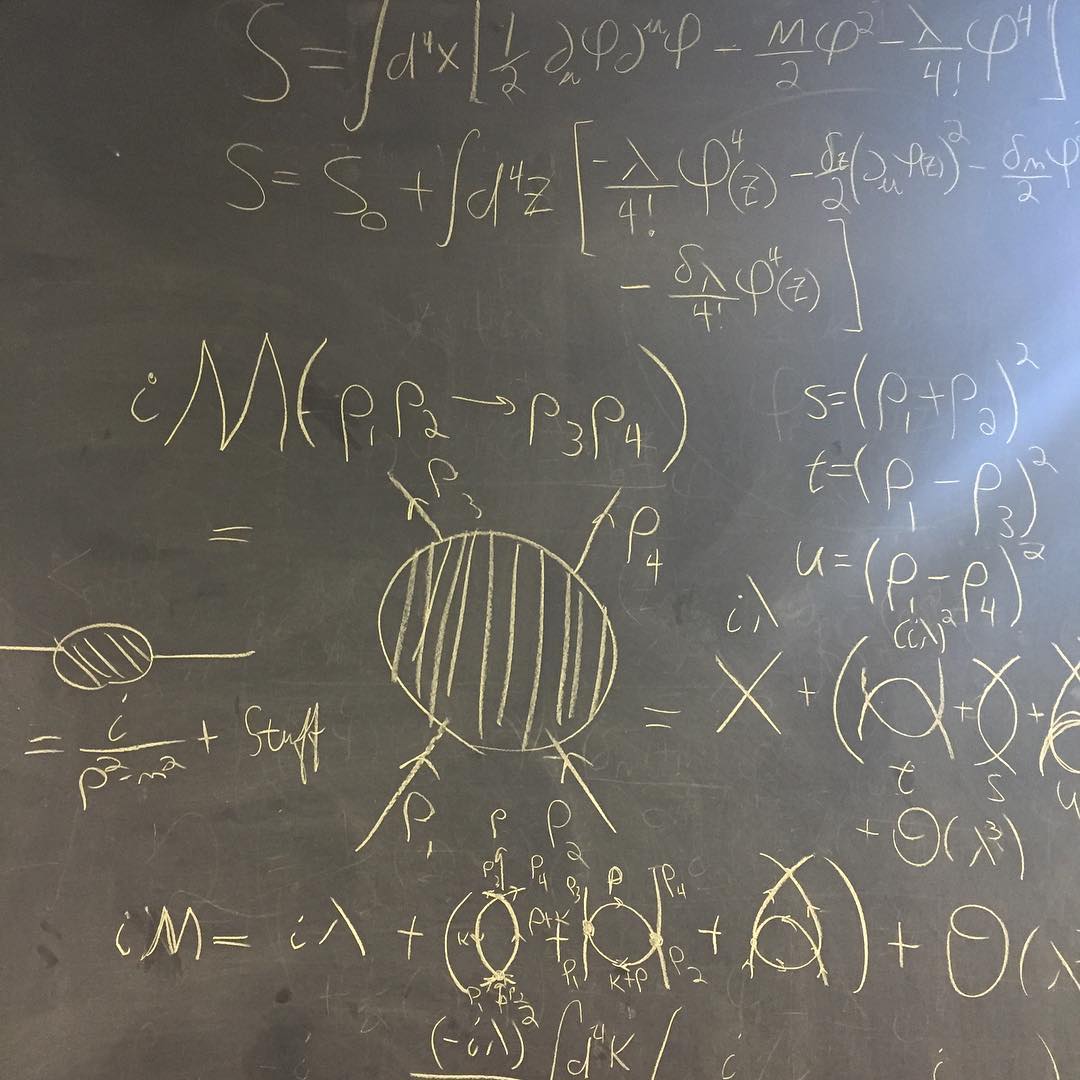What this is all about.
Note:
6/9/18
--------------------------------------------------------------------------------------
The Afterglow Project is
currently on hold while I switch research focus. I hope
to return to development in the near future. But am currently
spread too thin to continue.
---------------------------------------------------------------------------------------
The Afterglow Project is the working title of an idea I have been sitting on for the better part of a year, now. The main goal is to find a way to merge learning about a really cool, but obscure aspect of astrophysics, while doing cutting edge research at the same time.
The project aims to create a thriving community of scientists and enthusiasts, all working to understand and model the large archive of gamma-ray burst afterglow data. It also seeks to create a fun and interactive environment for understanding the physics behind them.




